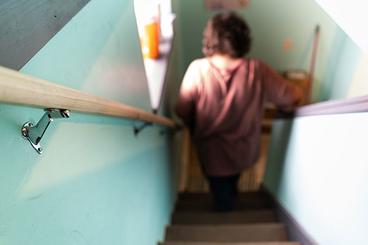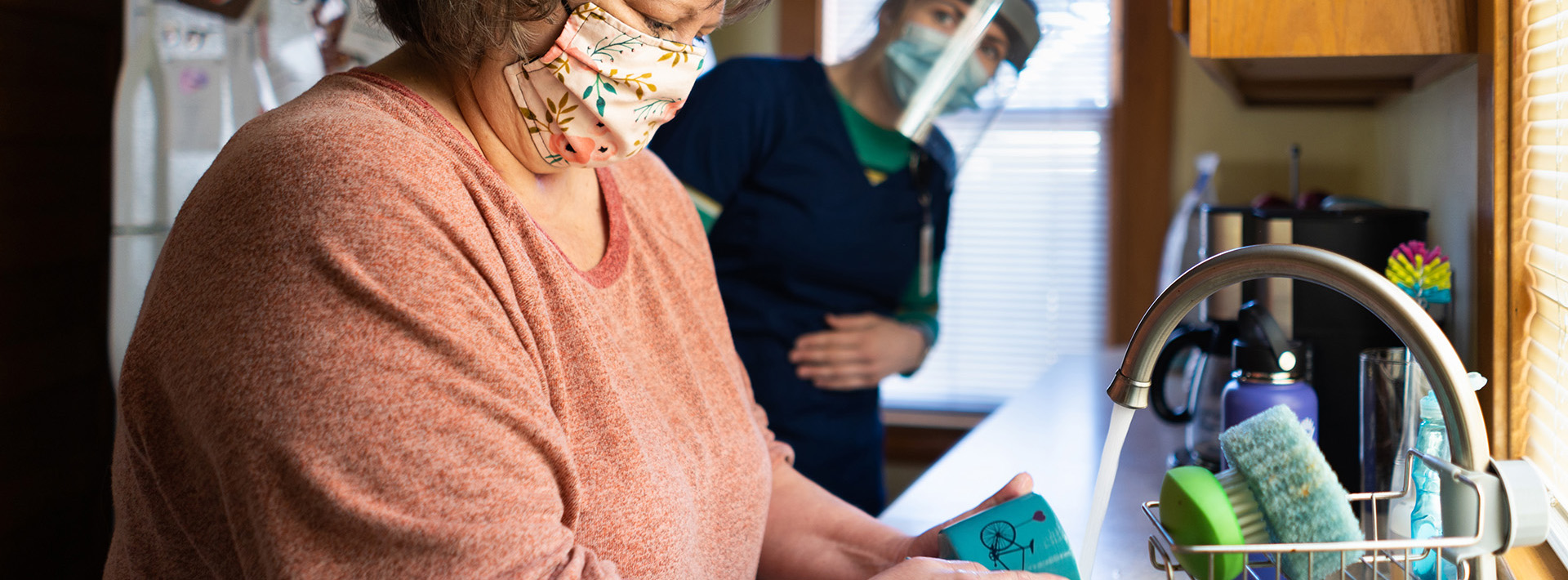
There’s so much Michelle Hutchens doesn’t know about the time gaps that passed between that mid-November day she tested positive for COVID-19, and the vague memory of her son forcing through her door to rush her to the E.R., and the blur of hospital personnel as she emerged from a coma more than a month later.
But the hours and days she later spent recovering in her son’s home played out in painstaking and sometimes painful detail.
The effects of COVID-19 left Michelle winded and strained, unable to ascend from her basement bedroom and to tend to her most basic needs. Every minute was a reminder of the things she couldn’t do, and a cause for worry that she’d never be able to do them again.
“I’m not a patient person, so it was very hard,” she says.
Less than a week after her discharge, a person Michelle had never met rang the doorbell, introduced herself, and began a process that would restore her self-sufficiency, and calm the anxiety that so commonly accompanies recovery from COVID-19.

Kelly Holden, a home health occupational therapist with AccentCare Fairview, brought to Michelle the expertise, inventiveness and compassion cultivated by more than a decade helping people live their best lives possible, and, before that, an immersion in the University of Minnesota’s Occupational Therapy (OT) program.
“The first hurdle with Michelle was the mental aspect of realizing that she was not able to do the things that she was doing before and adjusting to that,” Kelly says. “When she got home, she could barely get up and down the stairs because she was too fatigued. She had bad body aches and back pain, and after lying in a bed in I.C.U. she was very deconditioned. I had to validate her condition that this was a normal part of the healing process.”
Kelly circumvented the lingering unknowns and uncertainties of COVID-19’s overall effect on a person’s mind and body, with techniques she first learned in the University of Minnesota’s OT program, and has put to use with every patient since.
“She asked what I need help with,” Michelle says. “She’s a great listener.”
“Task analysis is a big thing we learned in school. You have to look at the person, their beliefs, their goals and their physical environment,” Kelly says. “So, our goals were teaching her energy conservation strategies such as sitting for a shower or pacing, taking her time, mixing activity with rest, and trying to wean her off of supplemental oxygen.”
And, Michelle added, regaining enough strength to be able to return to work.

Steadily, the encouragement, therapies, and strategies to help Michelle learn to help herself, enabled her to reclaim her independence, perform tasks that are important to her, and forgo the need for additional oxygen. Two months after Kelly first entered the home of Michelle’s son, Michelle is ready to move out -- to her own home, and to reclaim the job her employer held open for her.
“I’m elated,” Kelly says. “That was her goal. To be strong enough to be able to go back to work.”
“They didn’t know if I would walk or talk again,” Michelle says. “I’m excited to work. I’m excited to move. I’m very grateful.”
